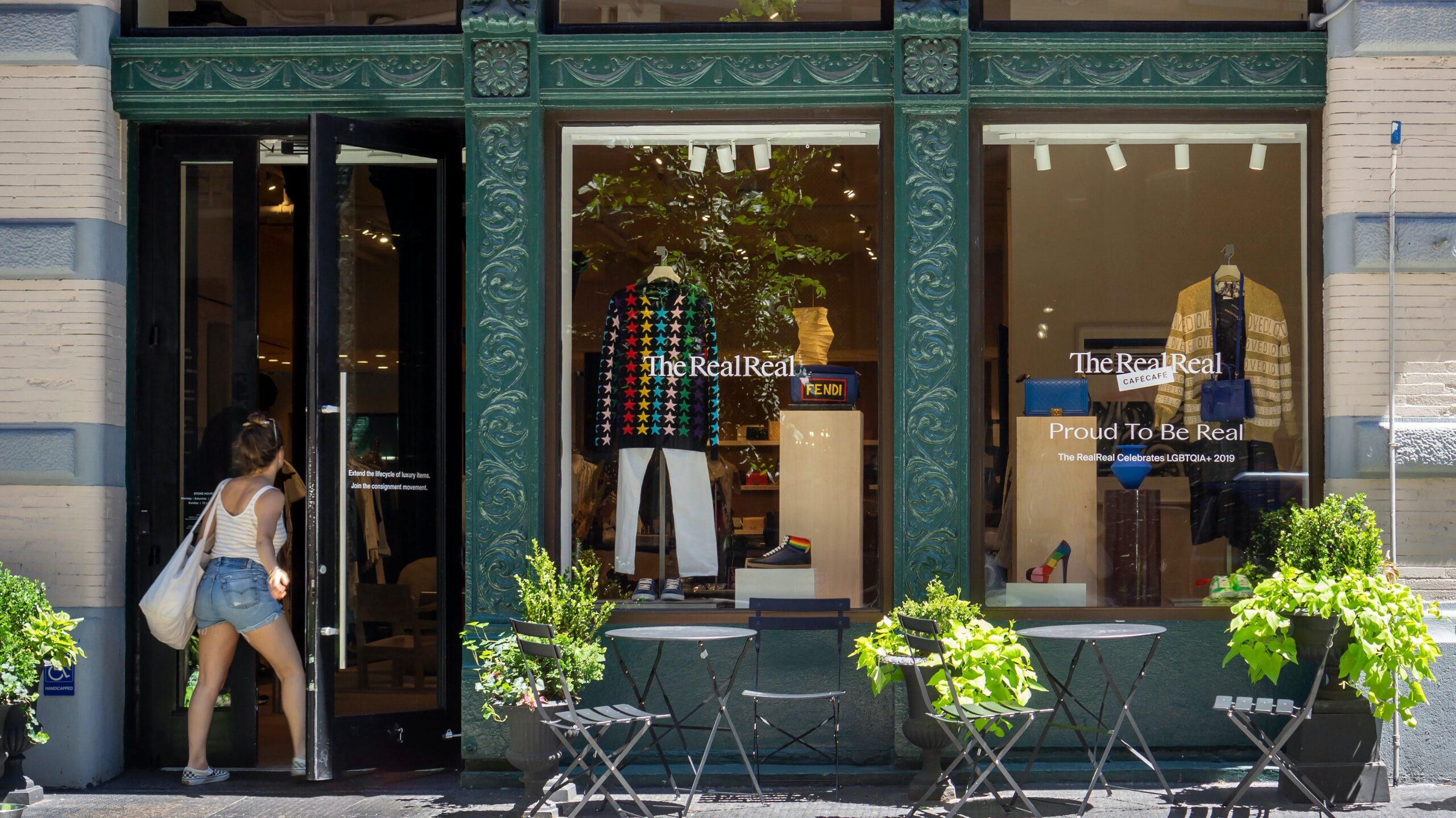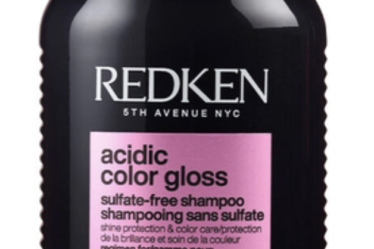
Sage Pierce used to be an avid shopper on The RealReal. Then she tried selling on the secondhand platform.
Late last year, the 27-year-old New Yorker consigned 10 pieces in her closet, including a new-with-tags Zimmermann dress she had purchased for $2,100 but never worn. Pierce said she hoped the dress would be listed at around $1,200. Zimmermann is a coveted brand after all, and the piece, from the brand’s Spring/Summer 2023 collection was a stunner, with a corseted bodice and a shell-beaded hem.
The RealReal priced the dress at $385. It sold — and was returned — multiple times, and Pierce eventually requested to have her item sent back. What she received was an entirely different dress: the same style, but in a different size and poor condition, with pilling and makeup stains.
It turned out that The RealReal lost her original dress. To add insult to injury, she said, the platform charged her a $15 shipping fee, which was eventually waived after a back-and-forth with customer service.
Pierce detailed the saga in a TikTok video last month, racking up hundreds of thousands of views before The RealReal reached out and reimbursed her $900.
“I don’t think I’ll sell with The RealReal again, and after seeing all of the comments and other horror stories … I wouldn’t purchase with them again either,” she told BoF.
Pierce is one of many disgruntled former fans of The RealReal, who have become increasingly vocal as the platform has shaken up how it operates in pursuit of profitability. The $15 consignment return fee and another $6.95 restocking fee for returning purchased merchandise were two such efforts. So is a commission structure introduced in late 2022 that reduced payouts for fashion across the board; lower-valued items from contemporary brands were hit hardest, but even high-volume sellers saw commissions drop by 10 percent or more on most consignments.
The commission overhaul was designed to reduce lower-ticket sales and incentivise pricier pieces like handbags and jewellery, which generate higher margins for the company. These products saw an uptick in seller payout rate, but make up only a fraction of what consignors are interested in selling.
The strategy has proven enormously popular with one specific, and highly desirable audience: investors. Those reduced commissions and restocking fees helped The RealReal report positive earnings before interest, tax, depreciation and amortisation after years of losses in the fourth quarter of 2023. Shares have nearly doubled since the results were released last month, though they remain down 88 percent from where they closed on their first day of trading in 2019.
Causing some consumer dissatisfaction was a painful but necessary step for The RealReal to survive beyond its first decade. Other venture-funded fashion companies that came of age at the same time as The RealReal have fared far worse. Allbirds, which posted another year of mounting losses in 2023 in its earnings results Wednesday, has seen its stock lose nearly all of its value, and now faces the prospect of being delisted from the New York Stock Exchange. With no investors coming to their rescue, these digital-native retailers have no choice but to focus on their bottom lines, which more often than not results in rolling back customer benefits that made them appealing in the first place. For The RealReal, this meant passing some of the costs associated with the complex supply chain of selling secondhand fashion online onto their customers in the form of lower payout rates. (Two of its biggest rivals, ThredUp and Vestiaire Collective, also say they will be profitable this year.)
“In the very, very early days, they were literally handing out money,” said Emilia Petrarca, a self-described fanatic of The RealReal and freelance reporter who has covered the company’s challenges for The Cut. “It was too good to be true and it couldn’t last forever.”
Negative feedback from customers was something that The RealReal had anticipated when it began its pivot to profitability 18 months ago. Founder Julie Wainwright had stepped down in the summer of 2022, and interim co-CEOs Rati Levesque, a co-founder in the business, and then-CFO Robert Julian took the reins on steering the company toward profitability. In January 2023, Neiman Marcus veteran John Koryl was named chief, and he further refined their efforts toward narrowing losses.
The new policies were aimed at drawing sellers of high-ticket handbags, jewellery and home pieces. It was also designed to discourage listings of lower-priced contemporary brands or worse, mid-tier fashion, which cost The RealReal a fortune as they gathered dust in the company’s warehouses but had once been a cornerstone of the company’s promise of convenience: sellers could make some money off of their vintage Chanels while also offloading everything else stale in their closet.
“We made commission changes. Did we get those exactly right? No,” Koryl said in an interview with BoF in March 2023. “I call it a Goldilocks situation … We’re going to have to find just right, and it won’t be just right for everyone.”
Overall, the strategy has worked: consignment revenue, the sales generated by individuals sending in items from their closet, rose 7 percent in 2023. However, overall revenue fell 9 percent to $549 million, as The RealReal backed off on purchases of bulk secondhand fashion from wholesalers. And of course, it reached profitability, posting adjusted EBITDA of $1.4 million in the fourth quarter of 2023, compared to $20.2 million in EBITDA loss in the same period in 2022.
The company is “on track to deliver a breakeven adjusted EBITDA year in 2024,” Koryl told analysts last month.
The result is a resale business on sounder financial footing, but one that feels less special to many users. Years ago, Eman Mabrouk, a stylist and former RealReal obsessive, said he would find rare Martin Margiela or Alexander McQueen pieces, but today, it’s all “logomania and top 10 bags,” he said. Mabrouk added he now sells his pre-owned pieces exclusively on eBay and Poshmark, where payouts are higher. He’s not alone: In the fourth quarter of 2023, The RealReal’s active buyers fell 8 percent from the same period in 2022, to 922,000.
The RealReal has kept some disillusioned buyers and sellers in its orbit because it’s one of the few luxury resale platforms operating under the consignment model, where the company processes and photographs items, and maintains the online listings. Sellers can jump to Poshmark, eBay or Vestiaire Collective for higher payouts, but listing on those platforms is time- and labour-intensive. The RealReal also still offers some of its old perks, including free at-home pickup for consignors. In October, it launched a new category called “rare finds,” curating vintage picks for collectors like Mabrouk.
The company is betting that as long as enough sellers remain in The RealReal’s ecosystem, shoppers will still see the platform as the go-to for secondhand luxury, if not in the rapidly swelling numbers seen in the late 2010s.
So far, that wager is paying off.
“What I’ll say is I don’t know what the alternative is,” said Petrarca. “I’ve tried every other platform, there’s no perfect experience anywhere as a seller … At least on The RealReal I’m not haggling with anyone.”



